#InConversation with Namrata Sneha
By Sanjana Srinivasan | Nov 1 2023 · 5 mins
Vadodara-based Namrata Sneha is a painter and printmaker who is interested in exploring her immediate surroundings through art. Trained as a printmaker, Sneha transitioned to painting for the medium's ability to add and subtract layers at any stage of the process. Her paintings often are landscapes and interiors that usually have no humans within them. In their eerie isolation, they speak of the inner worlds of an artist and the creative process that occurs within. Here, Sanjana speaks to Namrata about her practice.
Sanjana - Hi Namrata! Because its been a while since your OVR, I was thinking we could begin with you sharing about your journey since then?
Namrata - My practice has not changed since 2010. It has been the same. It's something I am focused on and continuing. I am still working on landscapes and seed painting and it evolves with time. Maybe the colour palette has changed. I am not rigid in that sense but the approach and the inspiration are the same. Organic forms like trees, rivers, and seeds always inspire me.
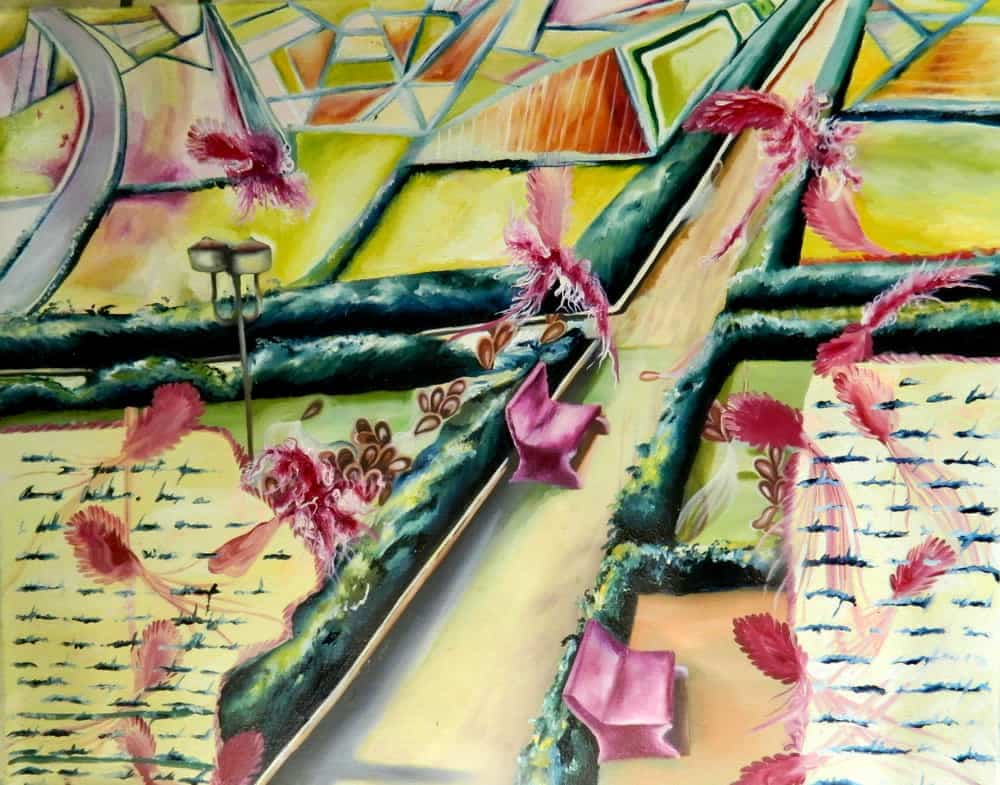

Wrote to you, 2013
Sanjana - As a painter, you have a very evocative style. What does it takes to create one’s own visual language? The organic forms and the brush strokes in your works are very reminiscent of Georgia O'Keeffe.
Namrata - Creating an evocative style to develop a unique visual language involves a combination of artistic elements such as colour, composition and subject matter. Through experimenting with these elements, artists can communicate emotions and concepts in a unique manner that aligns with their personal expression. This process typically involves a gradual evolution, requiring time and practice to perfect and make it genuinely one's own. During my exploration of the "Seeds of Emancipation" series, I couldn't help but draw parallels between my work and O'Keeffe's, as her distinctive style resonated with my artistic journey.
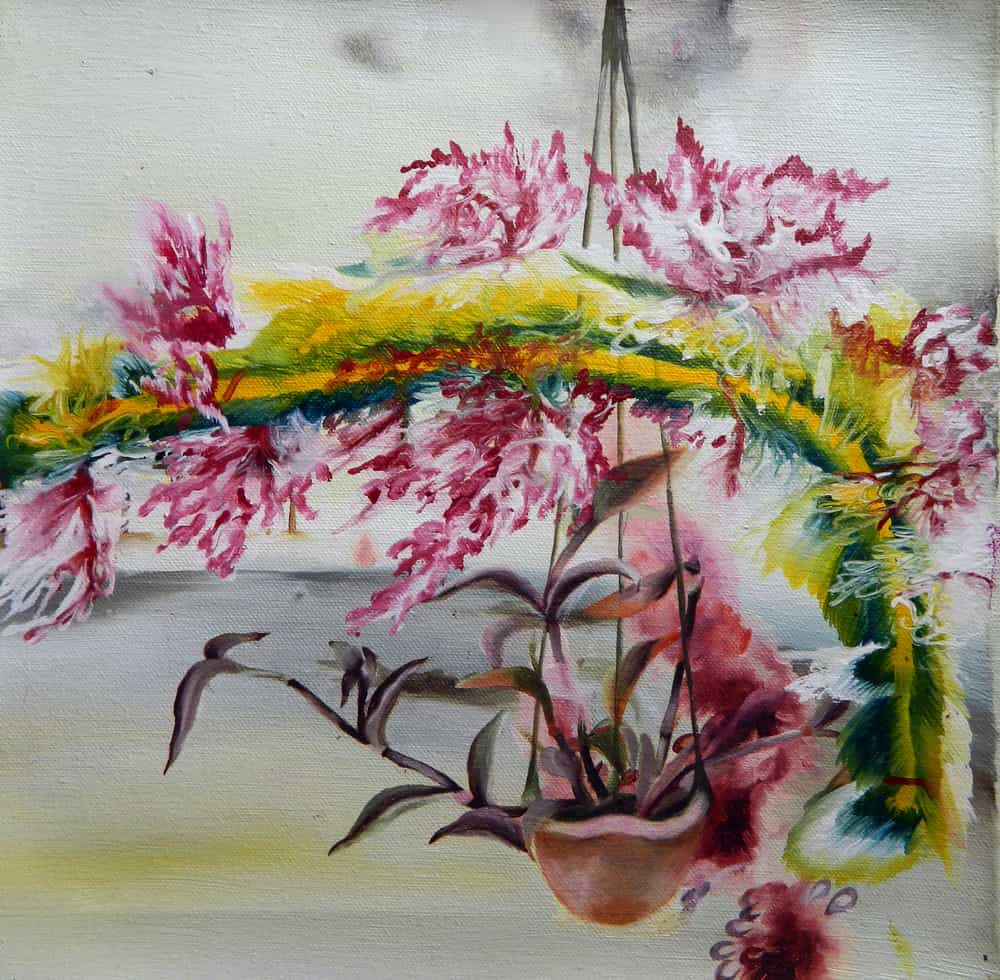

Hang on, 2013
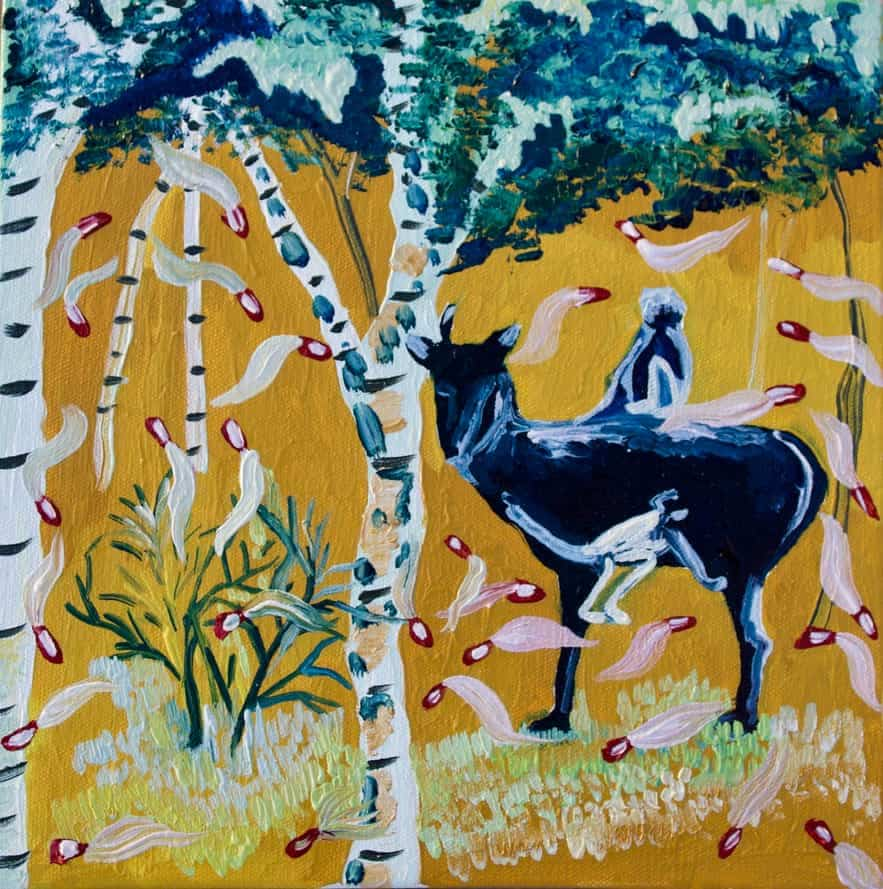

Monkey at Indroda park II, 2023
Sanjana - Tell me about your work process. You said there is usually no prep that goes on before you begin painting.
Namrata - Starting a painting without any preparation can be a spontaneous and intuitive approach. I initiate the process by facing a blank canvas or surface, deliberately avoiding extensive preparations. Instead, I embrace the freedom of spontaneity in my work, guided by my artistic intuition and a willingness to engage in improvisation.
Throughout the creative journey, I actively experiment with diverse techniques, colours, and textures. This experimental phase may involve making mistakes on the surface, but I remain open to adapting and evolving the work in response to these developments. Surprisingly, these 'errors' can lead to the emergence of unique and intriguing results.
A key aspect of my approach is the continuous evaluation of the artwork in progress. This evaluation aids in determining which areas to accentuate, adjust, or leave untouched. Importantly, this process is based on artistic instincts and the journey of discovery during the artwork's creation.
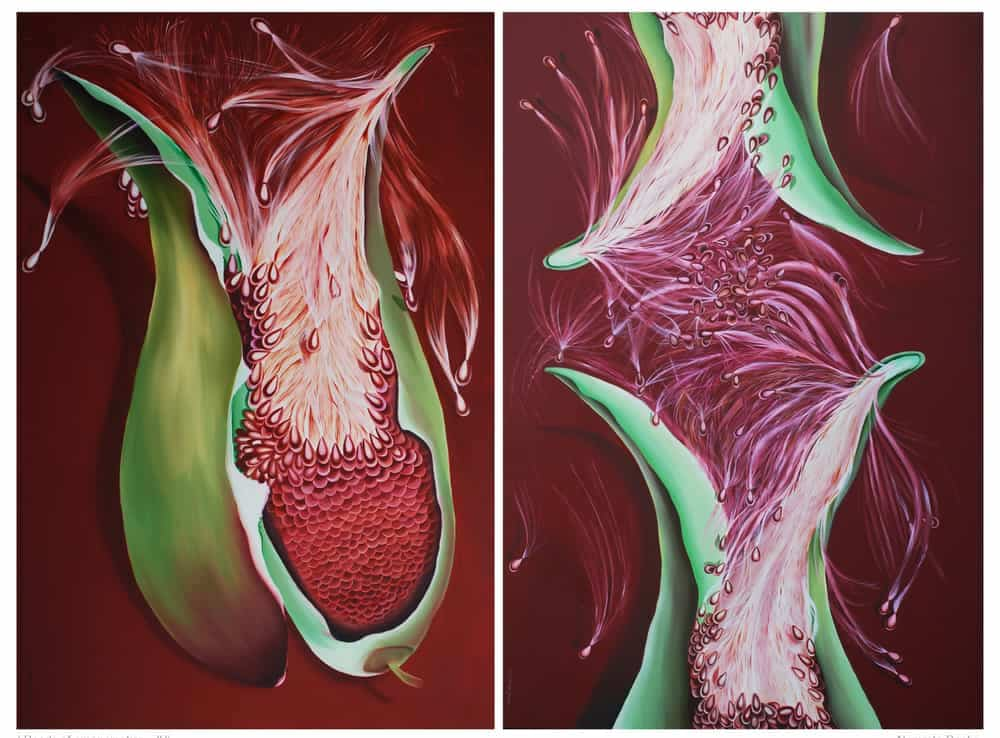

Seed of emancipation, 2010
Sanjana - In your paintings, you have largely two themes (i.e., if it can be broken down into that). There is an engagement with seeds and their symbolism and at the same time, you seem to be interested in landscapes. Can you speak about each of these individually and how your practice came to encompass these two elements?
Namrata -
In 2010, I embarked on my journey of seed painting as a response to my creative struggle and a quest for a distinctive and personal artistic concept. This idea was inspired by a sense of nostalgia, particularly when I delved into the study of seeds that are dispersed by the wind. These seeds became a metaphor for the various stages of life, growth, and emancipation.
At the outset, my seed paintings were primarily experimental studies. Over time, I gradually transformed them into abstract representations, introducing diverse organic forms and colours. Simultaneously, I continued my landscape painting endeavours. On occasion, I decided to blend both elements together in my artwork. The combination of seeds and landscape components in a painting offered a unique and inspiring opportunity. The seeds symbolise growth, life, or latent potential. Through strategic mark-making and the use of colour, I aimed to make the seeds visually prominent against the landscape, evoking a sense of discovery and exploration within the artwork.
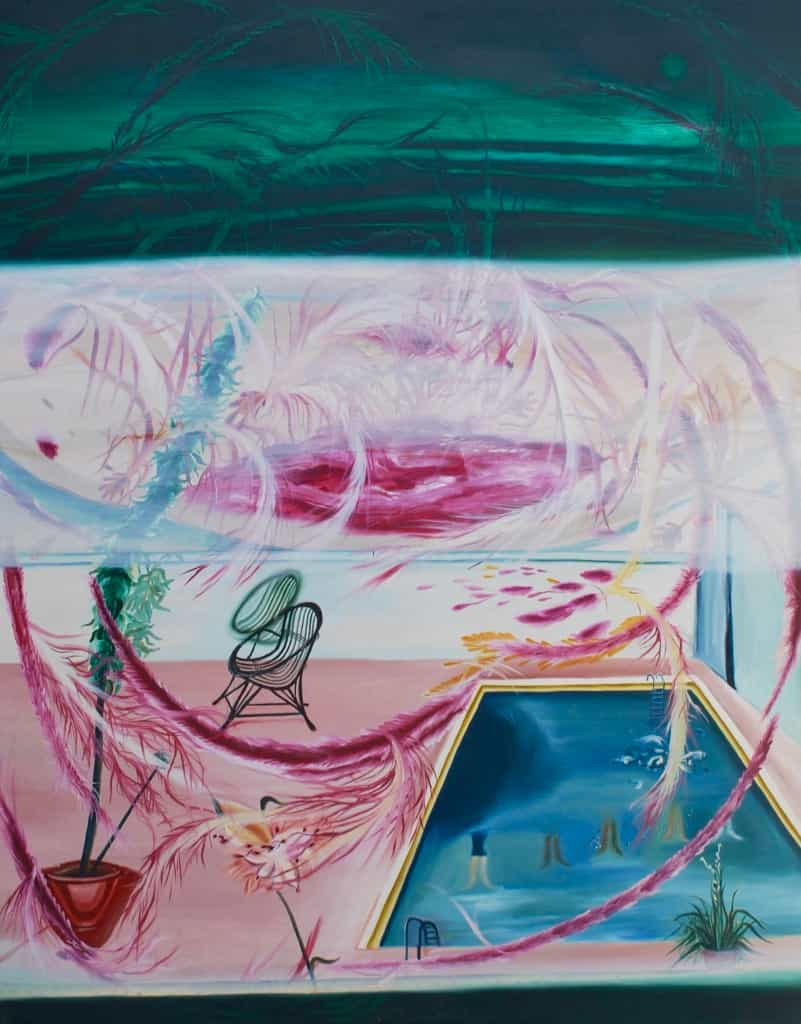

Whirling Around I, 2022
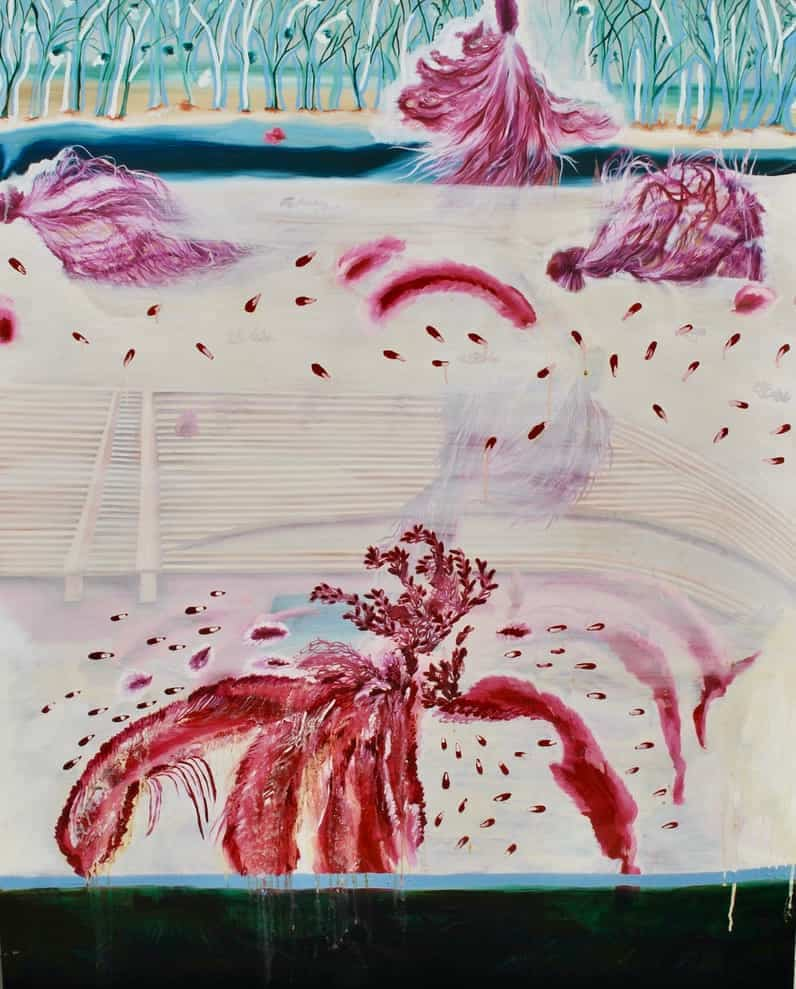

Whirling Around II, 2022
Sanjana - Tell me about the colours you use in your paintings. Your works are largely in shades of red and pink. Why is that?
Namrata -
I spent my formative years in the quaint town of Bhilai in Chhattisgarh, where the predominant soil colour is a rich red hue. This local environment has deeply influenced my subconscious, and I have developed a profound affinity for this particular colour. In fact, I consider a painting incomplete without the inclusion of this shade.
It's truly intriguing how one's upbringing environment can exert a significant impact on their preferences, including my strong attachment to the colour red in my artistic work. The red soil of Bhilai, Chhattisgarh, has seamlessly integrated into my subconscious aesthetic, establishing itself as an indispensable element in my paintings.
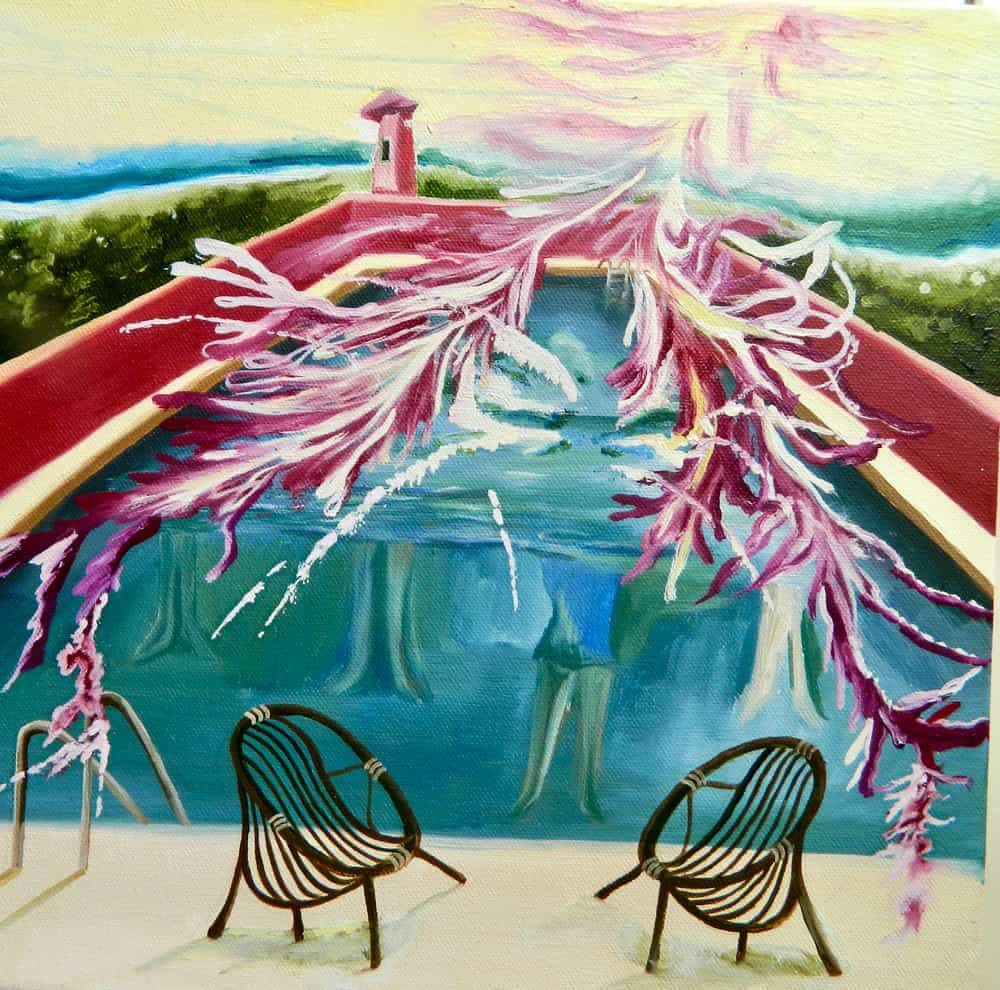

Splash, 2013
Sanjana - Tell me more about David Hockney’s influence on your works - particularly the poolside paintings.
Namrata -
David Hockney is a celebrated artist renowned for his significant contributions to landscape painting. Hockney's landscapes are particularly noteworthy for their bold and lively colour schemes. This aspect of his work resonates with my own artistic pursuits, as I also incorporate vibrant and bold colours into my landscape paintings. In a similar vein, Hockney's series of paintings depicting the changing seasons presents an innovative approach to landscape art. In my work, I've explored the theme of landscapes transitioning through different seasons, employing a combination of realism and abstraction to capture this transformation.
During a period when I was actively engaged in swimming in Baroda, I consciously drew inspiration from David Hockney's iconic poolside paintings. I immersed myself in observing the intricate details of what unfolded both outside and inside the water. It was a fascinating experience, as I closely observed elements such as bubbles, splashes, the colours of the pool, and the reflections, all of which I found to be deeply intriguing and inspiring.


Walk in the Garden II, 2011
Sanjana - That's brilliant. Before I let you off, could you tell me what inspires you?
Namrata -
Artistic inspiration can originate from a multitude of sources, ranging from the natural world, emotions, personal experiences, to the influence of other artworks. This process is highly individualistic and frequently unpredictable, yet it holds the potential for the creation of beautiful and profound artwork.
As a female artist, my journey has been characterised by resilience and creative ingenuity. I aspire to make a substantial and meaningful contribution to the realm of art.
Click here to view Namrata's Online Viewing Room and learn more about her practice.

